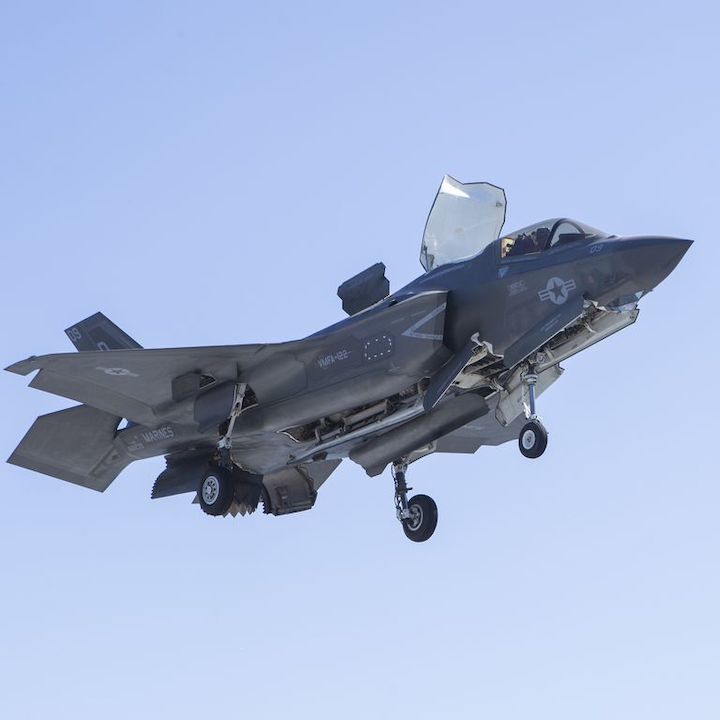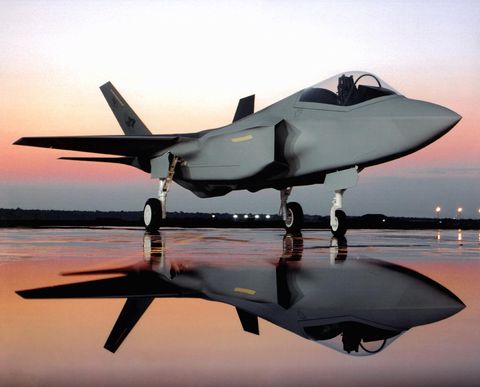1.11.2019
With a new purchase order, the F-35 reaches its lowest cost yet.

- The latest purchase deal for the F-35 reduces the price 13 percent over three years.
- The savings are the result of bulk buys and increased production efficiency.
- Despite the cost savings, the F-35 still costs about twice as much to fly per hour than its non-stealthy equivalents.
The F-35 Joint Strike Fighter’s price tag is falling about 13 percent over the next three years, the result according to Lockheed Martin, of “smart acquisition strategies, strong government-industry partnership and a relentless focus on quality and cost reduction.” Despite falling purchase costs, the cost to actually fly the jet remains high, at double or more the cost of other fighters.
F-35 purchases are made in lots, with the U.S. government negotiating on behalf of the Pentagon and overseas partners with jet manufacturer Lockheed Martin. The agreement, announced today, covers Lots 12, 13, and 14, for purchases made in 2018, 2019, and 2020, respectively. The aircraft are scheduled to be delivered in 2020, 2021, and 2022.
According to the agreement, the U.S. and its allies will buy 478 jets over three years, for a total cost of $34 billion. The -A model built for the U.S. Air Force and many international partners will cost $84.2 million in 2018, fall to $79.2 in 2019, and fall again $77.9 in 2020. The Pentagon and Lockheed Martin have long pushed for a target date of $80 million or less, and the company claims that’s happening one year earlier than previously projected.


